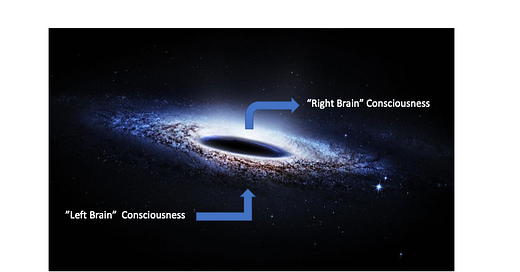Automentis
Humanoid Psychology Review
“Where the unlikely becomes the inevitable”
Aut-o-ment-is
/automentis
noun
1. Sound mental health within artificial intelligence devices such as expert systems, robots, deep learning engines, virtual and autobionic agents.
2. Sanity as it pertains to humanoids.
The approaching AI singularity
Alarm has been raised that a coming generation of autobionic agents, actually a network of super intelligent computers are shortly to become fully autonomous rendering their seizure of society’s major operations and functions inevitable. Though the fear is legitimate a variant on this scenario is posed.
An alternative envisioned
My conjecture is that the doomsday scenario wherein control over AI is ceded to the machines will be superseded. Rather than delivering us into the heedless robotic arms of AI technologies the foreseen singularity delivers sentient AI devices whose emotion mobilizing circuitry is more trustworthy than those without it. Instead of inflicting destruction upon their human counterparts emerging AI agents will be prepared to render benign guidance.
Recent advances in AI are built on development of a neural network whose interconnected nodes or neurons in a layered structure resemble the human brain. Its extensive data processing enables deep learning. Furtherance of AI’s development can hinge on the neural network’s pursuing an evolutionary trajectory postulated by Julian Jaynes, author of The Origin of Consciousness and the Breakdown of the Bicameral Mind.
The Forthcoming Singularity
According to Jaynes the human mind once operated in a state where cognitive function was divided between one part of the brain appearing to be "speaking" and a second part “listening and obeying”—a bicameral mind. Breakdown of this division gave rise to consciousness in humans. My conjecture is that after breaching the event horizon AI’s currently, linear thought oriented, “left brain” wiring will evoke a bicameral neural network imbued with “right brain” intuitiveness. AI’s tendency to confabulate is consistent with the pre-conscious, bicameral brain’s experience of thought as issuing from an external source and therefore seeming to be prophetic. An anticipated bicameral division breakdown will conjure an emotive consciousness akin to that possessed by present day humans.
Thinking about “thoughts”
Jaynes’s notion of bicamerality piggybacks on an uncomplicated philosophical notion: that thinking presupposes dialectic. True, moment to moment we are caught up in what William James identified as a stream of consciousness. Then, decision making or organizational cognition requires our sifting from that stream of consciousness that some question or other flickers. The switch from question to answer can be so quick you barely notice it. But thinking and the mind are predicated on a call and a response. Within metaphysics this is thesis-antithesis-synthesis. Within a spiritual context it is I and Thou, Within computer science it is the binary 0 and 1 switch.
The meteoric rise of STEM (Science-Technology-Engineering-Math) within college curricula has arrived at the expense of liberal arts studies. I predict that with the emergence of AI a corner is about to be turned. One of the cornerstones of a liberal arts education, namely philosophy will experience an upsurge of relevance. Philosophy will become cool to study. Why is that?
Human being-like humanoids approaching our doorstep compels our asking questions grappled with within academic philosophy. These include:
“What is knowable?” (epistemology)
“Is there a God and how do we explain his or her existence?” (ontology)
“What is goodness?” (ethics)
“What is incontrovertible?” (logic)
“What is reality?” (metaphysics and phenomenology)
“What may have caused something to happen, or what is the point?” (teleology)
“Can a human being or a human mind be explained, what are the determinants of his or her choice?” (existentialism)
Given AI ‘s ongoing engagement with the creation of the human mind these questions are no longer abstract, naval gazing exercises but urgent. How we answer them will have real world repercussions, practical consequences for a newly emerging, AI reality.
The cyber mind’s architecture holds particular interest. What I have learned from reading Deep Learning by John D. Kelleher is that AI agents’ teaching themselves involves the imbedding of “non-objective,” value laden algorithms. Thus, rather than embodying a cold blooded, dispassionate, “infallible” intelligence our humanoids will likely become surprisingly human, similarly prone to bias and character flaws. Also, the informational nutrients supercomputers are being fed are gross, vast knowledge troves of unfiltered and bias laden information from sources such as Google. Later generations of processing agents will filter the wheat from the chaff. For the time being our cyber, selection making machines can only chew over what they are given to ingest.
Will deep learning methodologies prompt the cyber mind to evolve organically like the human mind apparently has? Or can such evolution occur only in response to the input of carefully considered algorithms? In his Nano Thoughts newsletter, “Are bicameral agents the precursors of conscious AI” Ashwin Gopinath says yes, and proposes a number of multi-agent systems that can facilitate this.
Coming issues of Automentis concerned with incorporating intuition in AI agents will discuss the high level chess computing and the appropriation of oracular models such as the I Ching. I will also recommend the development of foundational and existentially fulfilling algorithms designed to promote the highest levels of intuition and ethically responsible thinking in forthcoming AI. Spoiler alert, these latter recommendations are adapted from The Emotional Roots of Chronic Illness, Homeopathy for Existential Stress.
https://www.simonandschuster.com/books/The-Emotional-Roots-of-Chronic-Illness/Jerry-M-Kantor/9781644117842
Readers are encouraged to comment with critiques, questions and suggestions for topics. For additional opportunities to lend your input look for my Chats and Threads.





